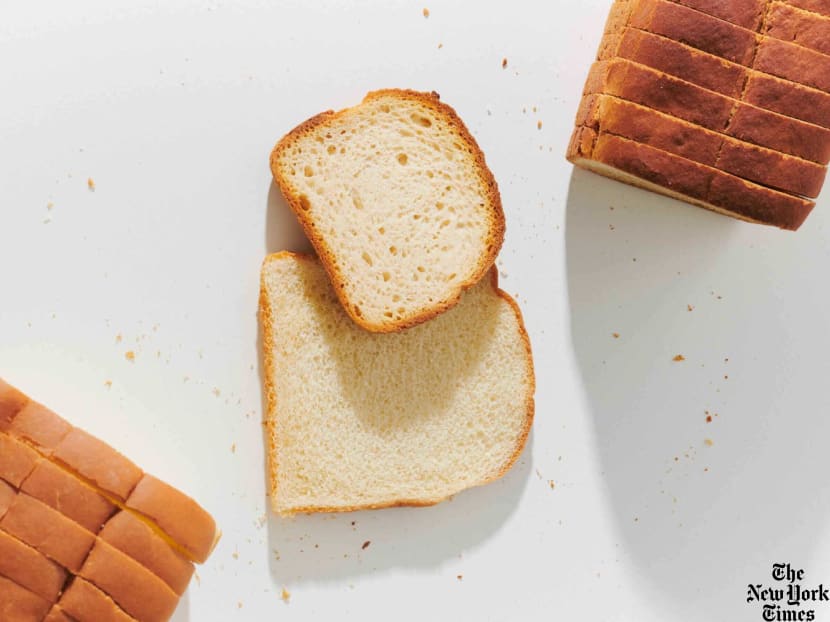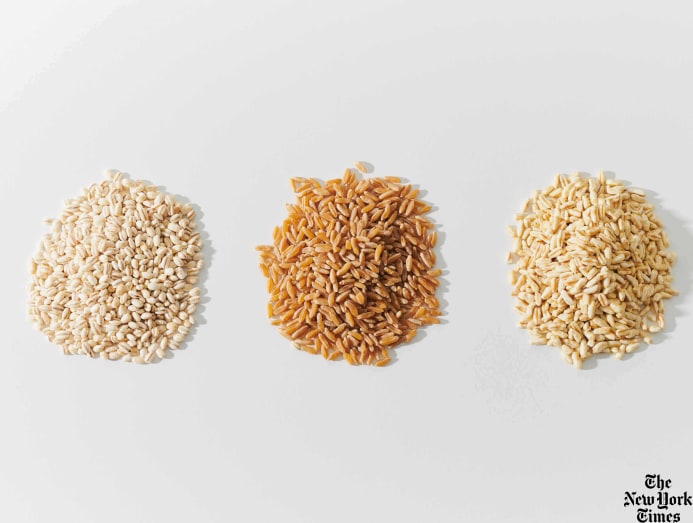Is gluten-free bread really healthier than regular bread?
Advertisement
Health
Is gluten-gratis bread really healthier than regular breadstuff?
Information technology may not be necessarily then if y'all call back the gluten-free version contains fewer artificial ingredients.

(Photo: Aileen Son/The New York Times)
At my grocery store, the bread pick stretches across an entire aisle. And among those amber waves of breadstuff loaves, bagels and buns are a few gluten-free options, which can cost about twice every bit much as their wheat-based counterparts. Are they a more nutritious pick?
Every bit is often the example with diet questions, the answer will depend on your individual circumstance, said Jerlyn Jones, a spokeswoman for the Academy of Diet and Dietetics and a registered dietitian in Atlanta.
Merely for virtually people, choosing a gluten-free bread instead of a wheat-based staff of life is non an inherently more than nutritious option, she added.
And, gluten-free breads tin be harder on your wallet, she said, since they are oft more expensive and accept a shorter shelf life.
Gluten is a poly peptide establish in the grains of wheat, barley and rye. In traditional bread made from wheat flour, gluten forms a protein network that makes dough cohesive and stretchy and gives bread that quintessentially satisfying, chewy texture.

But gluten or other components of wheat can cause health problems in some. For the estimated ane per cent of people worldwide who have celiac illness, a serious autoimmune condition triggered by eating gluten, the protein causes intestinal damage that tin can impair nutrient absorption and lead to symptoms similar diarrhoea, weight loss, fatigue, anaemia and a blistery, itchy rash. The but effective style to manage celiac disease is strict and lifelong gluten avoidance.
For others with milder wheat-related sensitivities, eating the grain doesn't crusade the intestinal damage found in celiac illness, merely can cause gastrointestinal discomfort and symptoms similar fatigue and headache that unremarkably get away when wheat is avoided.
It'due south not clear how many people have this condition, chosen non-celiac wheat sensitivity, merely it may be more than common than celiac affliction.
A third, much less common wheat-related condition is a wheat allergy, which tin cause allergic reactions like diarrhoea, airsickness, facial swelling or difficulty breathing within minutes to hours after eating wheat.
If you have celiac disease, wheat sensitivity or a wheat allergy, going with a gluten-free bread is clearly the improve choice. But in a 2022 survey of 1,000 people in the U.s.a. and Canada who purchased gluten-gratis groceries – conducted by the nutrient and beverage ingredient supplier Ingredion – 46 per cent said they bought those products for reasons other than a medical condition.
Gluten-free bread manufacturers often add together carbohydrate, fat and salt to their products to make them taste ameliorate.
Among their peak motivations: Wanting to reduce inflammation or eat fewer artificial ingredients, assertive that gluten-free products were healthier or more natural, and thinking that such products would help with weight loss.
Yet, none of these beliefs are true, said Anne Lee, a registered dietitian and an assistant professor of nutritional medicine at the Celiac Disease Center at Columbia University Medical Center. "Typically, the gluten-costless products are higher in fat, college in sugar, college in salt and lower in fibre and your B vitamins and iron," she said.
Making staff of life without gluten is a technological challenge, and manufacturers tend to rely on ingredients like refined rice, spud or tapioca flours, which incorporate much less protein and fibre than wheat flours, Dr Lee said.
Most of the refined wheat flours used in the United States are enriched with iron and the B vitamins folic acid, niacin, riboflavin and thiamin, while the flours used in gluten-free products generally don't contain these added nutrients.
Gluten-gratis staff of life manufacturers also ofttimes add together sugar, fat and salt to their products to make them taste ameliorate, Dr Lee said. And in part, because gluten-free breads tend to contain more water, fat and refined starch than wheat-based breads, they spoil and get stale more than quickly.
For these reasons, going gluten-free is not always a amend option. "If you remember you accept an intolerance to gluten, earlier you lot have it out of your diet, go see a gastroenterologist and really be tested appropriately," Dr Lee said. An added benefit: Celiac disease is more difficult to diagnose in people who have already eliminated gluten.
There'due south too quality of life to consider. Restricting your diet tin make yous more anxious in social situations or make you more than reluctant to endeavor bootleg foods at family meals, Jones said. Food "is not but fuel for our bodies, simply it also gives united states of america enjoyment, besides. You don't want to miss out on enjoyment, peculiarly nowadays," she added, referring to those who avoid gluten without a medical reason.
For her patients who need to eliminate gluten, Dr Lee advises focusing less on packaged gluten-free products and more on whole foods like fruits, vegetables, beans and gluten-free whole grains and seeds like amaranth, buckwheat, quinoa, teff and millet.
"If you do a gluten-free diet where y'all're using foods that are naturally gluten-free, like all these wonderful grains, then your nutrition can be incredibly healthy," she said.
But if you're craving a sandwich, you'll demand bread. The good news is that gluten-complimentary products have improved – "they're better than they were fifty-fifty 5 years ago," Dr Lee said.
Many manufacturers have started to include more than gluten-gratis whole grains in their products, which can boost fibre, protein and some vitamins and minerals. Just as wheat-based breads tin can range widely in nutritional quality, from highly processed white bread to whole grain loaves, the same is at present true of gluten-free options, Dr Lee said.
To place better gluten-free breads, Dr Lee recommended comparison their diet labels with those from whole wheat breads.
Cheque for similar levels of fibre and protein and minimal added sugar, and look for a breadstuff with whole grains among the kickoff few ingredients, which are listed in descending gild past weight, so that the beginning ingredient is always present in the largest amount.
"If your commencement ingredients are water and tapioca starch, put the bread back on the shelf," Dr Lee said.
By Alice Callahan © The New York Times
This article originally appeared in The New York Times.
Source: New York Times/bk
Source: https://cnalifestyle.channelnewsasia.com/wellness/gluten-free-bread-really-healthier-regular-bread-293386
0 Response to "Is gluten-free bread really healthier than regular bread?"
Post a Comment